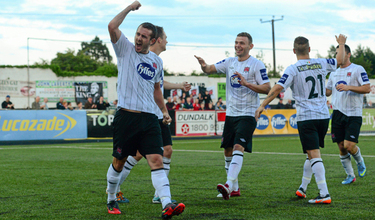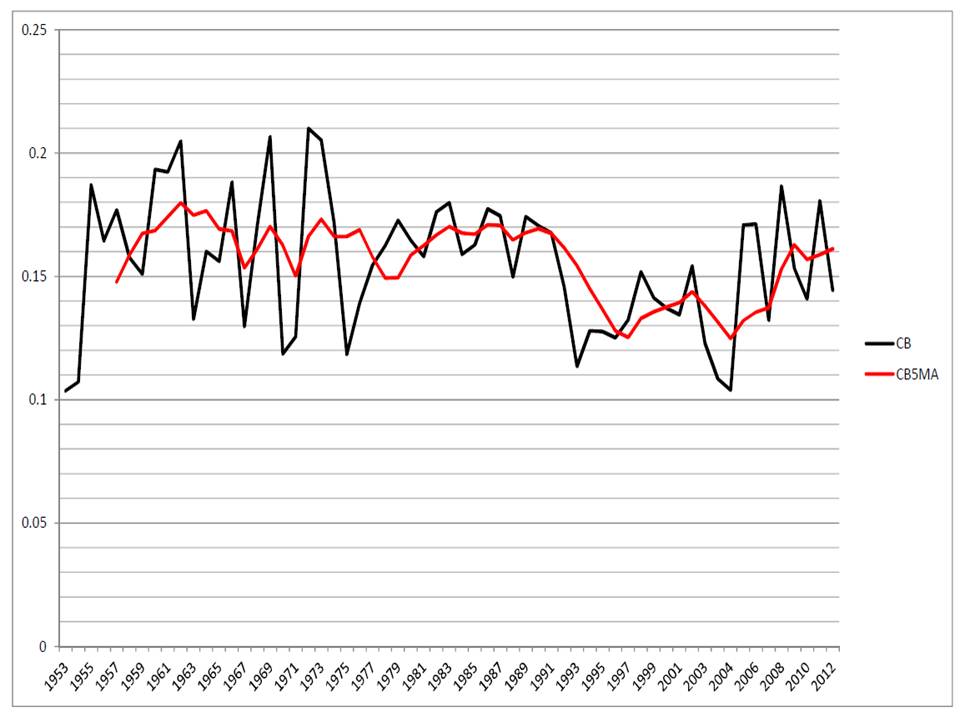
Competitive balance is an important idea in sports economics as it is a measure of the extent to which season outcomes are uncertain. If there are more clubs in contention for success then this should lead to more interest from supporters and so greater attendances. There are several ways to measure it and below I show some preliminary data on the spread of win percentages in the League of Ireland since 1953. However, Dundalk's success this season prompted me to look at the recent history of the clubs and it is remarkable how many of the clubs in the current Premier Division have been outside of the division in recent years.
League leaders St Patricks Athletic of course have never been relegated. They have a banner across the terrace at Richmond Park to point that out (the banner is only taken down for visits of Shamrock Rovers who seem to believe the banner refers to them). This is also the case for Bohemians. However, looking through the league it emerges that the other clubs have had difficult times recently. Dundalk were in the First Division in 2008, Sligo Rovers in 2005, Shamrock Rovers in 2006, Derry City in 2010 (albeit relegated for off field irregularities), Cork City in 2011, Limerick FC in 2012, UCD in 2009, Shelbourne in 2011 and Bray Wanderers in 2004. Drogheda United last played in the First Division in 2002 but they were relegated in 2010 before being saved by the demise of Sporting Fingal.
This means that 10 of the 12 Premier Division teams have been in the second tier (or were relegated to it) within the last 9 years. 7 of them (almost 60%) were relegated or out the top flight in the last 5 years.
This suggests quite a bit of a churn in the top division in Ireland.
As part of work on a paper on competitive balance (CB) in the Premier Division of the League of Ireland the chart below shows a basic measure of CB since 1953. It is a simple standard deviation of win percentages in each season. The graph also shows a 5 year moving average.
This is for further exploration within the data.

 RSS Feed
RSS Feed